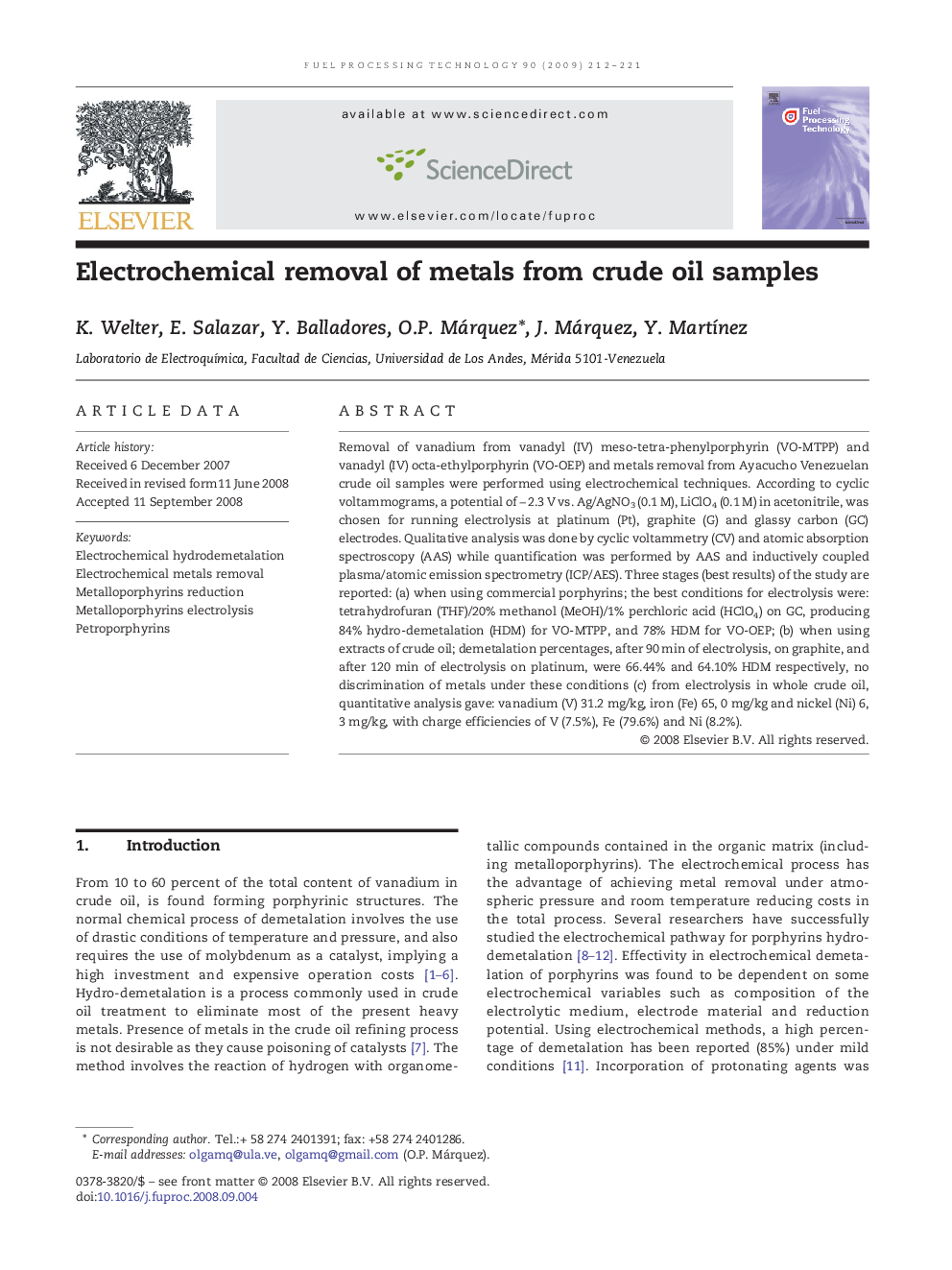| Article ID | Journal | Published Year | Pages | File Type |
|---|---|---|---|---|
| 211329 | Fuel Processing Technology | 2009 | 10 Pages |
Removal of vanadium from vanadyl (IV) meso-tetra-phenylporphyrin (VO-MTPP) and vanadyl (IV) octa-ethylporphyrin (VO-OEP) and metals removal from Ayacucho Venezuelan crude oil samples were performed using electrochemical techniques. According to cyclic voltammograms, a potential of − 2.3 V vs. Ag/AgNO3 (0.1 M), LiClO4 (0.1 M) in acetonitrile, was chosen for running electrolysis at platinum (Pt), graphite (G) and glassy carbon (GC) electrodes. Qualitative analysis was done by cyclic voltammetry (CV) and atomic absorption spectroscopy (AAS) while quantification was performed by AAS and inductively coupled plasma/atomic emission spectrometry (ICP/AES). Three stages (best results) of the study are reported: (a) when using commercial porphyrins; the best conditions for electrolysis were: tetrahydrofuran (THF)/20% methanol (MeOH)/1% perchloric acid (HClO4) on GC, producing 84% hydro-demetalation (HDM) for VO-MTPP, and 78% HDM for VO-OEP; (b) when using extracts of crude oil; demetalation percentages, after 90 min of electrolysis, on graphite, and after 120 min of electrolysis on platinum, were 66.44% and 64.10% HDM respectively, no discrimination of metals under these conditions (c) from electrolysis in whole crude oil, quantitative analysis gave: vanadium (V) 31.2 mg/kg, iron (Fe) 65, 0 mg/kg and nickel (Ni) 6, 3 mg/kg, with charge efficiencies of V (7.5%), Fe (79.6%) and Ni (8.2%).
